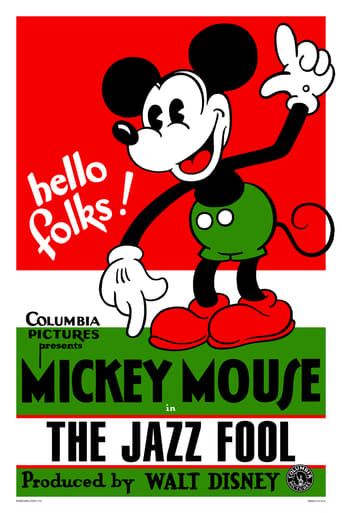OllieSuave-007
This is not a bad little cartoon featuring Mickey and a host of other Disney characters, playing instruments, including a feisty piano, to some really catchy tunes. Not much of a story here, but a nice musical number that is sure to enchant the younger audience.Grade B
TheLittleSongbird
I happen to love Disney and Mickey Mouse, and I did want to like The Jazz Fool more than I did. The Jazz Fool is not terrible, far from it. But at the same time it didn't feel all that special. The animation is mostly fine, there is some ugly character animation of Mickey at angles, but the backgrounds are at least crisp and the barns are less run-down than they have been in other Disney cartoons of this time. It was Mickey's facial expressions that were the most impressive thing in this regard, the anger, frustration and happiness are done so simply with raised eyebrows, turns of the mouth and the direction of his nose and shoulders but at the same time with so much expression. The music is lovely, with some lively tunes and Gershwin-like riffs interestingly arranged. It is at its catchiest when Mickey and Horace arrive at their destination at first. There are some fun bits like Horace playing even his teeth and shoes in perfect synch to the music, Mickey spanking the bum of the piano and the piano even retaliates by biting Mickey on the bottom. Mickey is very likable, as is Horace. Sadly, the story is very thin, two-thirds of it is literally Mickey just playing the piano and giving it a hard time. The gags are not very imaginative either, and not all of them hit the mark. Mickey's piano solo is almost exactly like a repeat of The Opry House. All in all, nothing amazing but worth a look. 6.5/10 Bethany Cox
MartinHafer
I assume that with this title, the Disney folks were parodying the title of the sound sensation "The Jazz Singer", though the film itself has nothing to do with this Jolson film. Instead, it mostly consists of Mickey entertaining the audience by playing the piano in a jazzy fashion. However, several times as he plays there are riffs that sound strongly inspired by George Gershwin. The music is all very pleasant but there just isn't much to the film. As a result of it having no plot and a lot of songs, it doesn't stand up as well as other early Mickey toons. Worth seeing for die-hard Mickey fans and film historians but pretty easy for others to skip.
Ron Oliver
A Walt Disney MICKEY MOUSE Cartoon.Mickey's Big Road Show arrives with THE JAZZ FOOL himself as the star attraction.This is an enjoyable early black & white film, with the plot driven entirely by the musical soundtrack, which features elements of ragtime & Dixieland jazz. Horace Horsecollar gets to showoff his solo instrumentalist talents. The animators threw in a heavy dose of their favorite posterior jokes - even Mickey's piano has its bare bottom smacked. The title is a salute to two recent Al Jolson film hits, THE JAZZ SINGER (1927) & THE SINGING FOOL (1928). Walt Disney performs Mickey's squeaky voice.Walt Disney (1901-1966) was always intrigued by drawings. As a lad in Marceline, Missouri, he sketched farm animals on scraps of paper; later, as an ambulance driver in France during the First World War, he drew figures on the sides of his vehicle. Back in Kansas City, along with artist Ub Iwerks, Walt developed a primitive animation studio that provided animated commercials and tiny cartoons for the local movie theaters. Always the innovator, his ALICE IN CARTOONLAND series broke ground in placing a live figure in a cartoon universe. Business reversals sent Disney & Iwerks to Hollywood in 1923, where Walt's older brother Roy became his lifelong business manager & counselor. When a mildly successful series with Oswald The Lucky Rabbit was snatched away by the distributor, the character of Mickey Mouse sprung into Walt's imagination, ensuring Disney's immortality. The happy arrival of sound technology made Mickey's screen debut, STEAMBOAT WILLIE (1928), a tremendous audience success with its use of synchronized music. The SILLY SYMPHONIES soon appeared, and Walt's growing crew of marvelously talented animators were quickly conquering new territory with full color, illusions of depth and radical advancements in personality development, an arena in which Walt's genius was unbeatable. Mickey's feisty, naughty behavior had captured millions of fans, but he was soon to be joined by other animated companions: temperamental Donald Duck, intellectually-challenged Goofy and energetic Pluto. All this was in preparation for Walt's grandest dream - feature length animated films. Against a blizzard of doomsayers, Walt persevered and over the next decades delighted children of all ages with the adventures of Snow White, Pinocchio, Dumbo, Bambi & Peter Pan. Walt never forgot that his fortunes were all started by a mouse, or that simplicity of message and lots of hard work always pay off.
